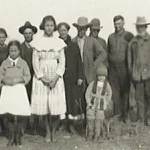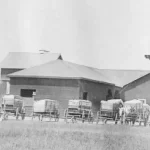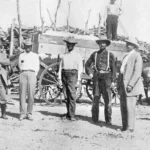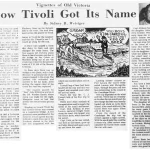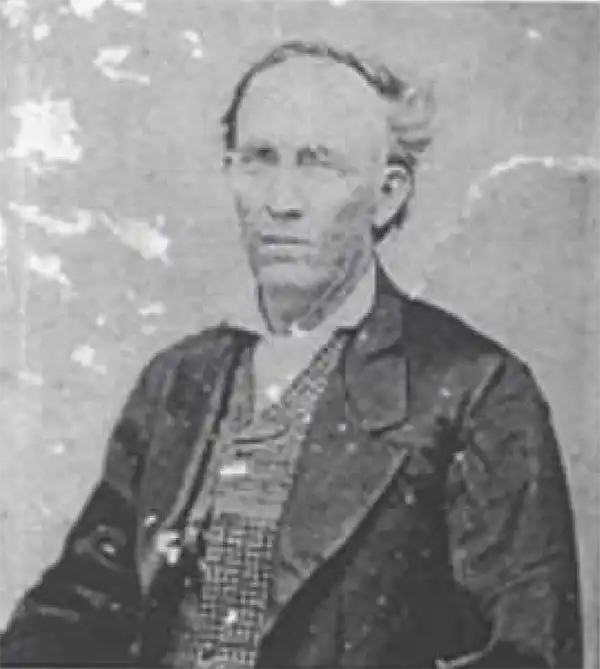
With the death of Daniel Osborn in 1871, his vast holdings were inherited by his children, Geraldine and Paul Osborn, and Charlotte Desiree Osborn Bernard. In 1872, Charlotte married Newton Cannon Gullett, who also possessed a vast parcel of land along the Texas coast”. He became a trustee of her holdings and is said to have erected a large home on a knoll about two miles northeast of the present town of Tivoli — a home in the style of the plantations in Louisiana. Historians who have told Gullett’s story say that “a wharf was constructed near the confluence of the San Antonio and Guadalupe Rivers, known as Gullett’s Landing.” Perhaps he rebuilt the original El Muelle Viejo? His schooner, Lady Dora, would land lumber and building materials, furniture, clothing, food and other supplies from New Orleans and Galveston.
After the death of Charlotte Gullett, Newton remarried and carried on his business ventures at the site of Mesquite Landing until tragic circumstances and the scandal of a murder forced him to sell his holdings and more to Galveston. He died there in 1900.
The Daily Advocate (Victoria) reported on May 3, 1909 in an article entitled “Drought” — “Lee Barker, in charge of the public road construction gang, has been making excellent headway with the road beginning at the Mesquite Boat Landing and working toward Refugio.”
Click the PHOTOS below to open a full size image!
In 1909, the McGrew family still had ownership of the land where their ferry had been operating since before the Civil War, but a bridge was constructed at the site that year. It’s unclear whether the bridge was on the north or the south side of Mesquite Landing, but it would have hindered travel upriver. A cotton gin was in evidence at the landing in 1911, with wagons lined up loaded with cotton and also with bales stacked along what appears to be a wharf at the river.

A branch of the St. Louis, Brownsville & Mexico Railway that was extended through Tivoli in 1912 was surely a nail in the coffin of Mesquite Landing as a shipping point. But a big rise of the Guadalupe River washed away the rail beds. Perhaps it was a protest of nature — go away, noisy railroad! Leave historic Mesquite Landing at peace on the banks of the river!
The rail beds were restored, however, but water traffic to the landing kept up for several years, perhaps in protest or distrust of the rail system.
Today, the site of Mesquite Landing (where Texas Highway 35 crosses the Guadalupe River just east of Tivoli) is an unhallowed RV campground with a few fishing shacks up on stilts to protect them from those big rises in the river.
An alligator lazily floats by. The river is muddy and not so very wide at all.
Great oak trees weeping with Spanish moss are still along the banks of El Sabinito.

